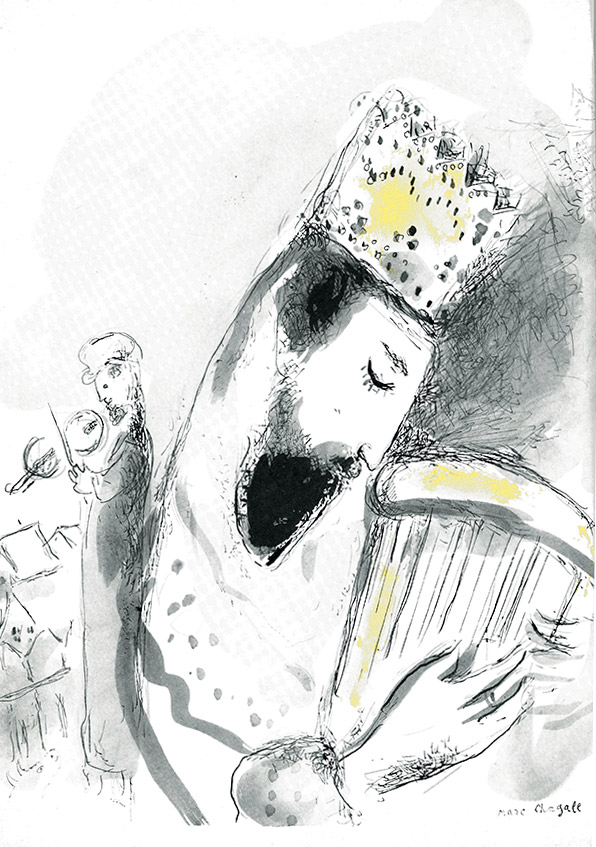In an essay on Arnold Schoenberg, Theodor W. Adorno called the German Jewish composer 'Musikant,' thus alluding to traditions of Jewish music mainly known in Eastern Europe. The difference between 'Musikant' and 'Musiker' that echoes with Adorno's linguist decision, reveals a fascinating correspondence and a whole set of tensions—and transformations—between the sacred and the secular, the modern and the ancient, invention and tradition, innovation and repetition. This is demonstrated in a work by Marc Chagall, who shaped the image of the ancient musician, King David, according to the model of an Eastern European Musikant. Chagall's work serves as the cover of Anthology of Jewish Music: Sacred and Volk Songs of the East European Jews, edited by N. Vinaver (New York, E. B. Marks 1955) that includes Schoenberg's "Psalm 130 for Mixed Chorus," op. 50B. The cover image reproduced here comes from a copy in the collection of the Library of the Herbert D. Katz Center for Advanced Judaic Studies.
Careful study of Arnold Schoenberg's opera Moses und Aron reveals how modernist techniques of the New Music translated, re-defined, and gave a radical interpretation to concepts and ideas from the realm of Jewish tradition such as prophecy, revelation, the Mosaic Law, and prayer. When we look at how religious figures are transformed into art, and particularly how the question of monotheism and the image prohibition (i.e., the law that prohibits the making of the image of God) is elaborated in innovative musical textures, it becomes evident that Jewish secularism is not merely a process of "overcoming religion," but rather a complex transformation of theological elements and traditions into new and ambiguous forms of aesthetic representation.
Also translated and employed in the realm of secular poetics is the configuration of the violin in modern Jewish and Hebrew literature. The secular adaptations of musical images are embedded in religious traditions and loaded with biblical connotations which generate contradictory categories: lamentation which resonates with a promise of redemption, destruction that reverberates with national revival, exile that echoes with the homeland. Transformed into modernist and contemporary works of literature, they play a role in the poetic rebirth of a Zionist body, the narration of the Arab-Israeli conflict, and the shape of a memory poetics after the holocaust. We see, thus, how the violin becomes a medium of identification and negation, imagination and documentation within which old and new identities are revealed, but also challenged. This transformation of musical figures exposes, however, the dissonances of secularism—namely, the dialectic relationship and tensions, the discontents and limits of secular cultures.
